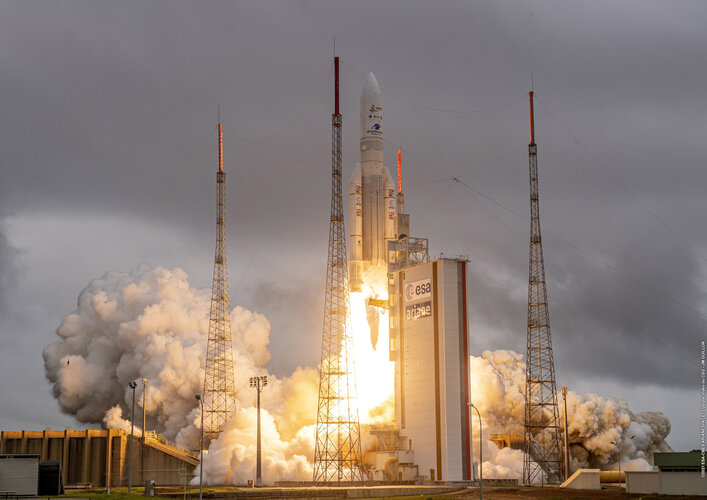The day started early. Daniel woke at 04:00 that Christmas morning and made his way to work, where he confirmed that everything was still nominal with the launcher on the pad. An hour and a half before launch, he entered the main launch control room and oversaw the completion of the last tasks before launch. As a standard procedure, all of these final preparations must be completed forty minutes before launch. Then, the team waits.
“You become a bit stressed because you have to wait,” he says. To take his mind off those stresses he met with the media to answer their questions. Then seven minutes before the launch, he returned to control room as the final countdown began.
Everything was automatic at this stage. The flight operations team devoted their entire attention to monitoring the status of the launcher – ready to abort if something were to go wrong. In the final seconds, ignition took place: first the main engine, then seven seconds later the boosters.
The rocket left the pad. The operators continued to monitor the telemetry information being sent back by the launcher, looking for even the smallest deviation from what they predicted.
The team followed the ascent and its various steps. First, the boosters were separated, then the fairing opened up into two halves to reveal Webb at an altitude of 110 km, then the first stage separated, the second stage ignited and later shut down. Finally, Ariane let go of Webb at an altitude of 1400 km. The camera on the rocket watched as the space telescope drifted away, making an adjustment to its trajectory as it went. A few minutes later, when it was precisely on its course, Webb automatically deployed its solar panel, and began communicating with Massimo’s team in Baltimore. Daniel and his team had done their job.
But it didn’t quite happen like that.



